Early Days
Born March 8, 1824 in Market Street, Newcastle to parents Thomas and Margaret, Thomas Story was baptised in St.John the Baptist’s Church, Newcastle, on September 9, 1827. He was the baby of the family, the third of three children, with older sisters Margaret (b.1821), and Mary (b.1822).
Thomas apparently trained as an instrument maker at some point during the 1840’s, but we do not know with whom he was apprenticed – perhaps his own father. We do know that before marrying Mary in April 1851 he had made a voyage to the Caribbean West Indies, where he built and repaired organs. This was the first of two extended trips to the Americas; Thomas obviously had a good dose of wanderlust.
“Thomas Story Horn refused communion unless he took it with the black people. He was an organ builder. Also went to Cincinatti, Ohio and Huntsville, Alabama where WWH and his brother Tom were born.”
Voyage to the West Indies
In 1846 at the age of 22 he set sail for the West Indies. By February 1847 he was in Trinidad, according to a letter from his father Thomas sent to “Port Spain”. By spring 1848 he was in Barbados, again per a letter from Thomas Horn (31 May, 1848). He built or installed several organs and tuned others, keeping them at concert pitch – surely a challenge in the Caribbean heat and humidity. In what appear to be Bee’s transcriptions from a letter by William Wilson Horn, the latter describes his father’s early sense of social justice:
“When in Port of Spain, Trinidad, he noticed that the colored people were required to take their sacrament last. He considered that in a place of worship there should be no invidious distinctions. Accordingly, one Sunday morning, after all the white people had partaken, and Thomas Story had declined, he lined up with the “niggers” and the sacrament with them. This instance of moral courage in a youth so astonished the Governor that he invited him to all the receptions as long as he remained in Trinidad”.
“While TS was in Grenada he met the Chief Justice of the Island, a Newcastle man who had been at Bruce’s School. He was delighted to hear all the news of the “canny toon”, but nothing would induce him to believe that Thomas was a Newcastle man because he had no trace of the local “burr”. The Judge and others took special pains to retain it. So Thomas very quietly remarked, “Smash marrer, y’are wrang”. The Judge was so overcome and delighted by the words that he had not heard for years that he hugged him, and was his best friend ever afterwards in that part of the world”. [WWH letter to ?]
Back to England
During the Industrial Revolution the Westgate area of the city became developed by wealthy merchants and gentry, so the Horns were apparently either on their way up, or “up” already.
“The houses on the north side are pretty uniform, and are ornamented with flower-plots in front, having also gardens and conveniences behind. This long range of buildings is called Cumberland Row. At regular intervals there are passages that lead to buildings behind.”
The American Adventure
The first mass migration of Germans in 1830 and Irish a decade later swelled Cincinnati’s population to 46,338 people. The economy continued to boom as the South paid cash for foodstuffs produced in the city, and by 1850 Cincinnati was the pork-packing capital of the world. More than 8,000 steamboats docked at Cincinnati in 1852.[more]
It appears that TSH settled into business quite quickly, again using his skills as a maker of instruments. In 1851-2 he is listed in the Cincinnati Directory as “General Music Instrument Maker” with premises located at the northwest corner of Gano & Main Street, in downtown Cincinnati.
“He is very tall, nicely plump without being to fat, Black eyes Dark hair as to who he is like I can not say, some people say he is like Mary and some me, he is quite a pretty intelligent looking child”.
“She complained of her head so much and he [the doctor] was affraid of epileptic fits he recommends her to keep herself quite quiet, this is what she can not do as she has the baby to look after and all the house.”
Move to the South
Perhaps the fact that in 1854 Huntsville became the headquarters of the Memphis and Charleston Railroad, the first railroad to link the Atlantic Ocean with the Mississippi River meant that it was a growing town with good prospects for a young family [more].
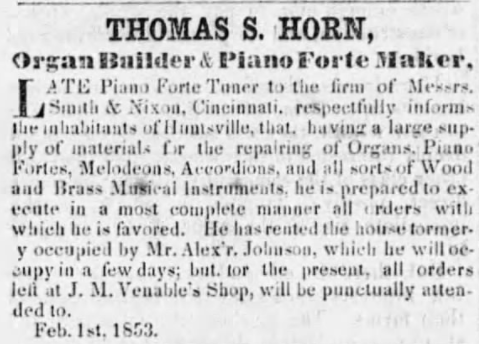

From Tom’s letters home it seems that life here offers challenges, just as in Ohio. Nevertheless, it is here in the Deep South that their second son is born. In a letter to his parents dated March 7 1854 to his parents Tom announces that his “dear and affectionate wife has presented [him] with another dear little son”. This was, of course, William Wilson.
“Now my dear father this part of the world is not the place for an Englishman to come to for this notion of slavery and all that I can hear of this part I see that it will not do [for?] me and I have at last made up my mind to get back to a free state”.
Return to Newcastle
“Tom is soon expected in England with his wife & children. I hope he may now find it most to his advantage to settle down in his own Country … very much doubt after all his ramblings if he met with anything better than old England, with all her faults and it appears she has many at present.”
Although there are no details of their return, the family makes the long journey north back to Boston, from where they hope to sail to England. It turns out that returning to England was not to be as trouble-free as the Horns may have hoped. They arrived in Boston with their two young children only to find that there were no berths available for passage across the Atlantic. Tom’s March 1855 letter (pdf) from Boston is full of frustration:
My dear Father we are all sick of travelling and long to be home again poor baby is quite sick and has lost all his flesh and frets and cries all the day as for little Tom he stands it well and I do hope that I may be able to get them both safe to England. I will thank you to let Msrs *** know our disappointment and tell them not to be uncomfortable about us for should we have to take a sailing vessel the weather is fine and it is not likely we will exceed a three week’s voyage.
Horn and Story
Census 1861
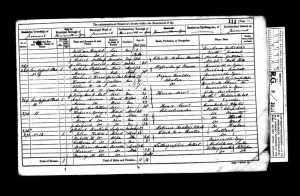
After the fire they moved the shop down the road to 89 & 91 Grey Street, nearer to the Theatre Royal.
It is interesting to see examples of the kind of printing Horn and Storey did at this time: examples of sheet music include “Rocked In the Cradle of the Deep“, (listed at Mystic Seaport Museum of America & the Sea):
Another pubication, which came up for auction in the not-too-distant past, is an 1877 set of Tunes for the Northumbrian Small Pipes, Violin or Flute, quite a lovely text judging by the auctioneer’s description:
musical notation throughout, light browning, a little light soiling, title repaired with a little loss to a couple of letters of the title, modern morocco-backed cloth, morocco gilt drop-back box, oblong 8vo, Newcastle upon Tyne, Horn & Story, 1877.
Interestingly, the Horn & Story name was still in use into the 1930’s – a H&S metronome from 1932 was auctioned in 2011 showing that it was still a viable name in the musical instrument business.
Thomas was able to turn his engineer’s hand to other products, too: the March 12, 1869 edition of the Journal of the Society of Arts notes Thomas as having invented an improved miner’s lamp. [image, article?].
Census 1871
The Census shows that the family was living at that time at 22 Grove St., Elswick, Newcastle. Tom, now 47, is listed as Head of Household and “Music seller”. With him live son William W. (17) and daughter Margaret (14, “Scholar”). An Isabella Sanders (14) – a boatbuilder’s daughter – is recorded as a visitor; and 49 year old Hannah **(?) is their General Servant Domestic. Cousin Elizabeth from Penrith, now aged 41, is also still living with them.
“…Thomas Storey Horn, of No. 23, Grove Street, Newcastle-upon-Tyne, Music-Seller, and William Wilson Horn and Margaret Mary Horn, Spinster, both of the same place, infants, by the said Thomas Storey Horn, their father and next friend, Mary Busher Slater, Wife of Thomas Slater, of No. 8 Forth-street, Newcastle-upon-Tyne aforesaid, Miller, by the said Thomas Storey Horn, her next friend, and Thomas Horn Slater, John Falconar Slater, Waldron Story Slater, Margaret Falconar Slater, Spinster, Bertha Slater, Spinster, and Edith Maud Slater, Spinster, all of the same place and all infants, by the said Thomas Storey Horn, their next friend, and Thomas Story, of No. 60, Lovaine-place, Newcastle-upon-Tyne aforesaid, Music Seller, and the said Thomas Slater, presented their petition to the Lord High Chancellor of Great Britain…”
The Chancery proceedings were to authorize the sale of the hotel and nearby other buildings to Richard Gillard, after being willed by Margaret Falconar Horn to the children & grandchildren.
A Move to the South
At some point in the 1870’s Thomas moves to London. He settles in Croydon, and sets up business in the Strand, in a small four storey premises located next to Somerset House (now Courthauld Institute of Art), a pretty fancy address, occupied today by J. & S. Franklin, Ltd.
The Census entry for 1881 gives some insight into TSH’s life at age 57. He is living at “The Cottage”, Elgin Road, Croydon as a widower. William Wilson, now 27, and their maid Annie Ortmiller (16) are living with him. As a “Digitorum Manufacturer” (see below) he employs 8 men. At this time daughter Margaret (24) was back in Newcastle living with acquaintances at 24 Campbell Street.
In trying to unravel the movements of the family in London a Probate notice from 1891 for Margaret Mary Barker, wife of Reginald Walter Barker, indicates that they also were living in Elgin Road, number 9 [is this The Cottage?]. William Wilson had married their daughter Sarah Amelia Barker, ten years his younger, in August 1884.
[MORE ON BARKER]
Digitorum – listed in the Official Catalogue of the International Inventions Exhibition (p323)
- Horn & Son, 151 The Strand: “Patent Improved Digitorum for Finger Exercise“
[Music Box…]
Interestingly, although Thomas Story has moved south by this time, Horn & Story was still going strong in Grey Street, back in Newcastle. A Directory listing from 1882 describes the store:
“Pianos and Music Sellers: Horn and Story, 89 and 91, Grey street. Depot for Sheet and Book Music, and Pianofortes, American Organs, Harmoniums and other Musical Instruments. Newest music always to be had. Concert Agents. Pianofortes, Harmoniums, &c.”
Through the connection with the Barkers, the Horns also began to get into the patent business. In 1884, for example, Horn & Son published a short pamphlet offering patent advice for inventors: The Inventors Guide to the New Patent Law and another, The New Law Relating to Trademarks. So in addition to, the old family business of publishing which is still going strong, they start specialising in patent law. J.A. Berly’s Universal Electrical Directory and Advertiser (1884) lists Horn & Son, Patents and Trade Marks Registration Agents, at 171 The Strand, so apparently they had moved up the street by this time.
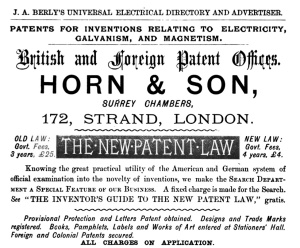
Advertising as British and Foreign Patent Offices, Horn & Son placed an advertisement in Engineering, vol.6, December 1888 for a Guide to Patent Law and Registration, price 3d.
Back to ‘Huntsville’
On the home front TSH names his house on Thornhill Road “Huntsville”, obviously remembering his early travels. Given the fact he was not too happy in Alabama at the time, perhaps nostalgia had softened his memories. By the time of the 1891 census old Tom is still living with William Wilson and Sarah Amelia at No.9 Thornhill, with the grandchildren Amy, Ida, and Wilson, and two young domestic servant girls Alice Frost and Mary Evans.
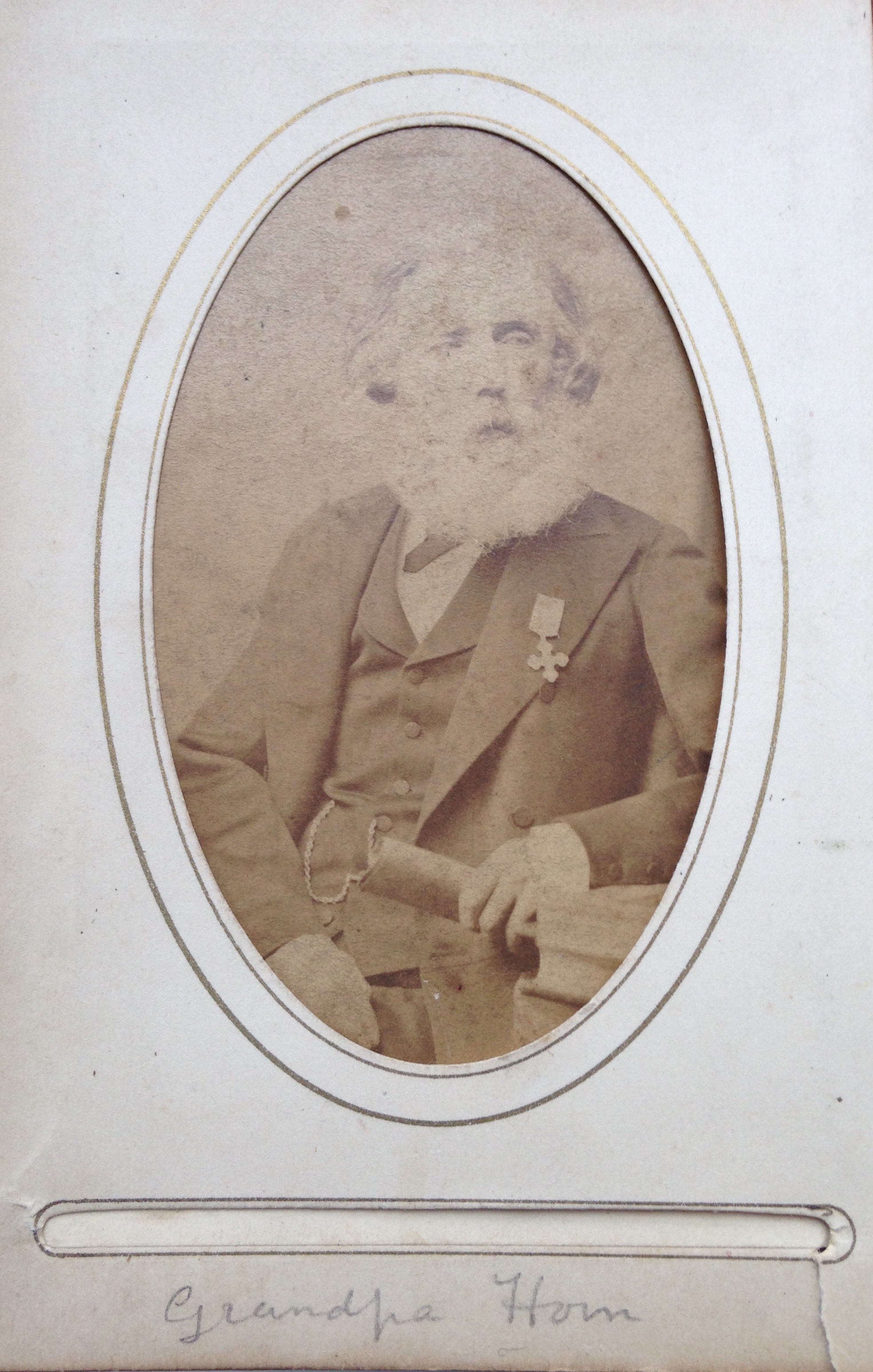
It was not long after the Census was taken that Thomas Story Horn died, on 4 June 1891, aged 67, leaving a personal estate of £200 8s 4d. – around £5k in 2012 money.
A short obituary of sorts was published in the North Country Lore and Legend/Chronicle, in September 1891, referring to a tribute from George Julian Harney, a radical political activist, journalist (on the Northern Star), and Chartist leader:
Mr George Julian Harney, in a letter to the Newcastle Weekly Chronicle of July 25th, gave a biographical sketch of Thos. S. Horn, who had died on the 4th of June. The deceased was formerly connected with the firm of Horn and Story, music sellers, Grey Street, Newcastle. He had learned the business of organ building in London, and had also passed some time in a piano forte factory. Coupled with his mechanical capacities was a strong sense of adventure; and when he was 22, in the year 1845, he went to Port-of-Spain, Trinidad, which he made his headquarters, whence, in prosecution of his calling, he made repeated voyages to Barbadoes, St. Thomas’s and other islands of the West Indies. Mr Horn, who was 67 years of age, during his early career in Newcastle took an active part in the Chartist movement, and was identified with the Northern Political Union.
[LINK]

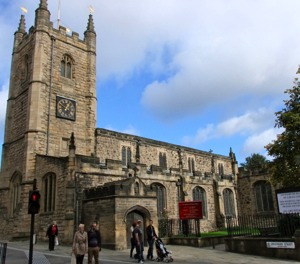
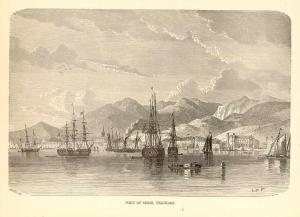

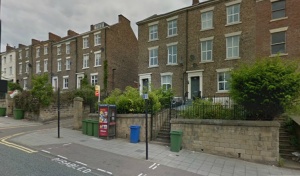
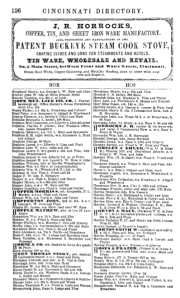
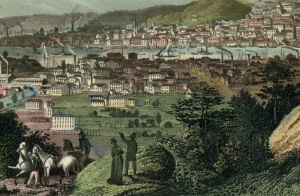

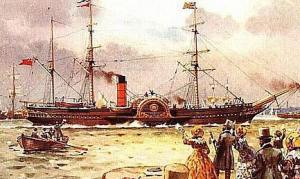
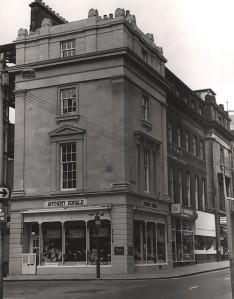
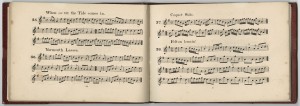
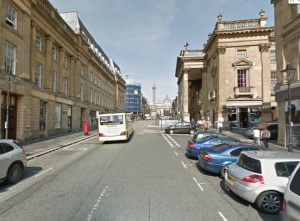
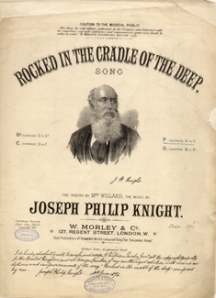


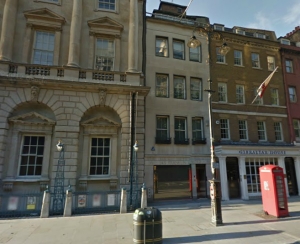

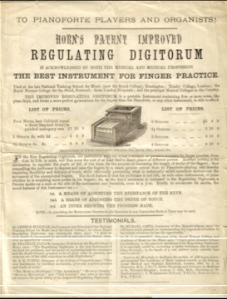
I found your Thomas Story Horn information very interesting and am thinking that this will fill in a few gaps for me. My great grandmother was Mary Busher Horn and she married Thomas Slater. My grandfather was Waldron Story Slater who married Mary Crosby. They settled in New Zealand in 1904. I am now seeing where some of the family names came in and I am excited to be seeing some connections and loose ends that can be tied up. The Horns have always been elusive. I know that the late Sir Robert Stephenson Horn, 1st Viscount of Slammanon, Chancellor of the Exchequer, etc. was a relative of my great grandmother’s.
Anyway, thank you for what you have written and I look forward to researching more now from the information.
Best regards,
Coralie Gilmour
Coralie – thanks so much for your comment! How wonderful to hear from a fellow Horn descendent on the other side of the world. I would love to be able to add your line of decent to my Ancestry.co.uk and Mundia tree. I’d be especially interested if you have any pictures of anyone or family stories on the Horn side. We have original letters from the early-mid 1800’s which mention Mary quite often. I will take a look into Sir Robert, as I have not come across him before. Thanks again! Rob
Thank you so much Rob for your reply. Unfortunately I do not have a lot on the Horn side of the family but I have some of the Horn/Scarbrough lineage. I do have the marriage certificate for Mary Busher Horn and Thomas Slater which I can scan and send to you. I have had major computer problems, so when I can get back to finding all my information I will send you what I have. Also I have some great photographs of Sir Robert Stephenson Horn which I can send – you may see some family resemblances! Is it possible for you to give me your e-mail address as I am not able to “drop-in” the information that I have. It is much easier for me to send information by attachment. My lineages are quite complex, as to name a few, I have forefathers from England, Scotland, Sweden, Italy, America, Canada, etc. The American and Canadian forefathers have, of course, been traced back to England. My husband is Irish and his lineage is all or mostly Irish, so for him it is hard to get his head around all my forefathers scattered around the world that have bottle-necked down to New Zealand and Australia.
You might also be interested to read about Thomas Slater and Mary Busher Horn Slater’s son, John Falconar Slater, brother of my grandfather, Waldon Story Slater. He was quite a famous artist. Several years ago I managed to purchase three of his paintings from England – much in the style of Constable but in saying that JFS could turn his hand to a lot of different techniques and styles.
I look forward to hearing from you again – Coralie
Hi All, my mother is the daughter of Jane Horn who was the child of Annie Horn (born 1887) and Thomas Horn. Interestingly my Mum, her brother and her sister were all given Horn as a middle name after my Nana had married a Burns. I have told her about Ancestary.com and she will look to do this in the coming weeks. If either of you read this it would be great if you could confirm it via email to robert.woodley@sky.com Kind regards
Good to hear from you, Robert – thanks for your message.